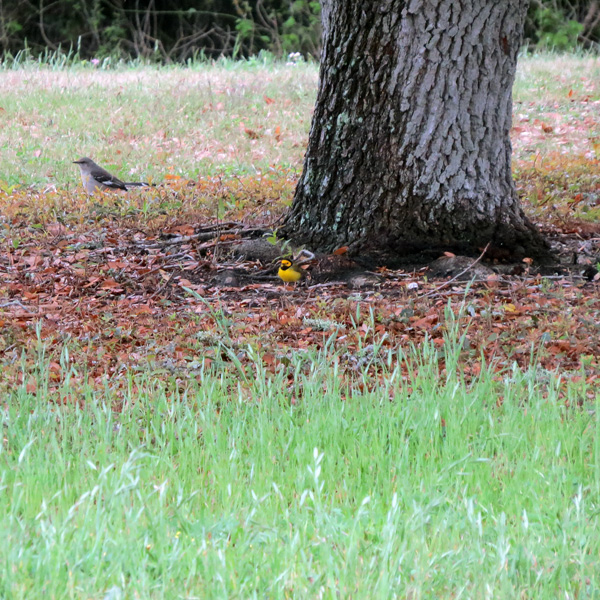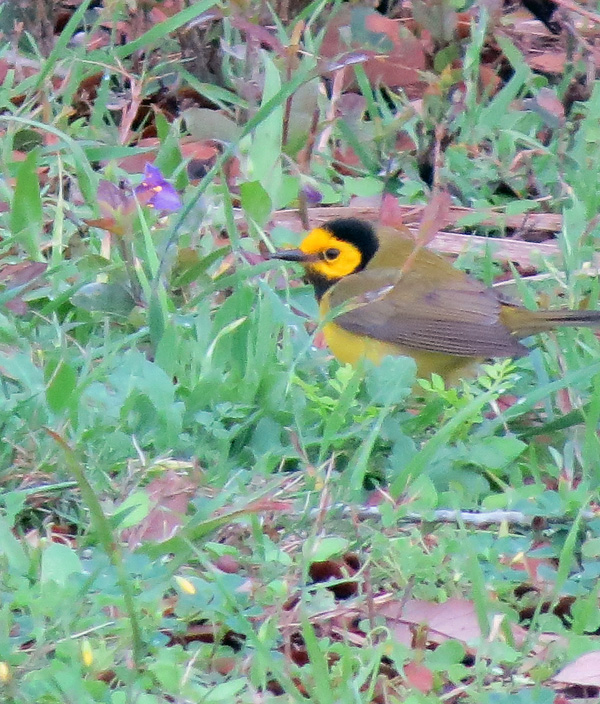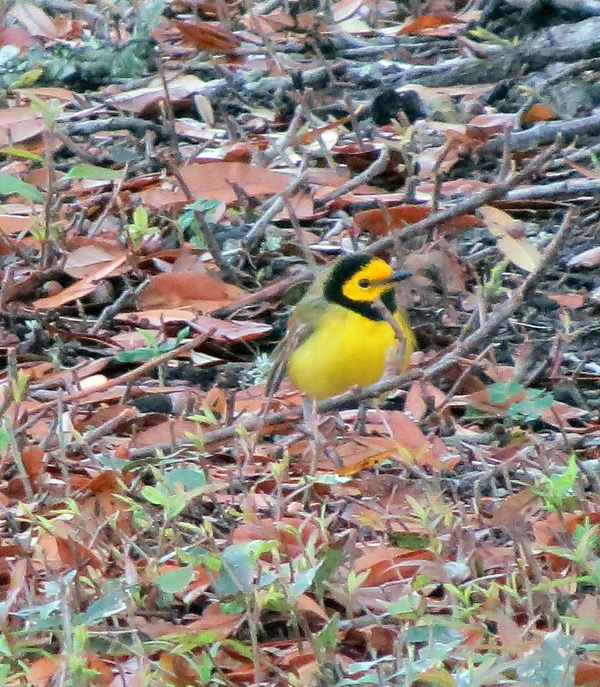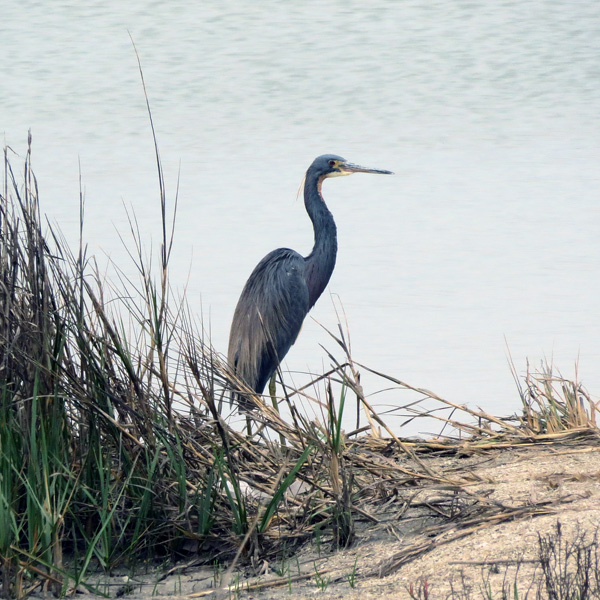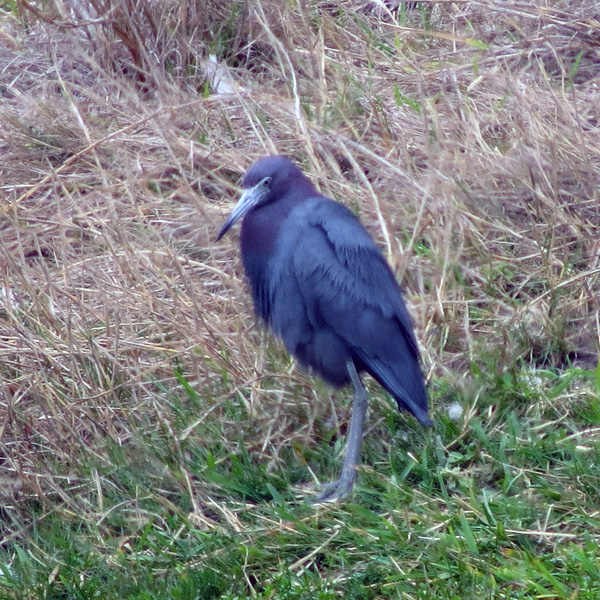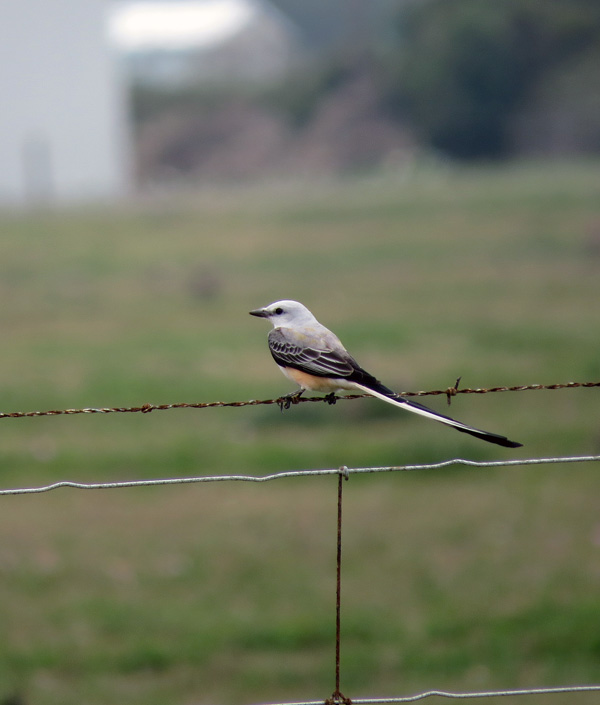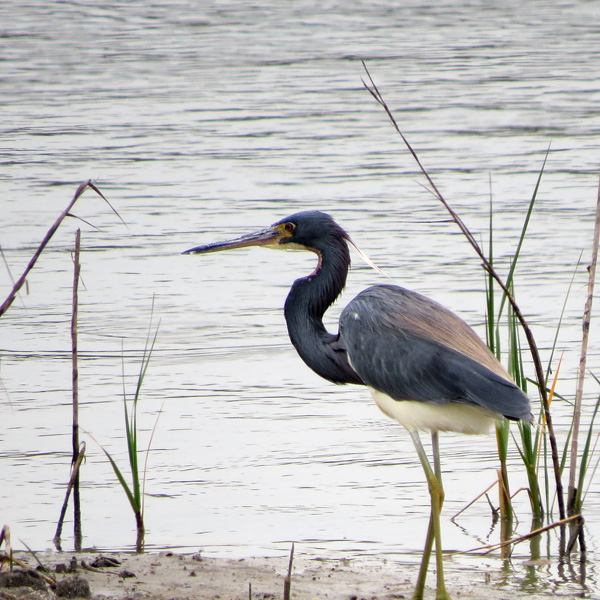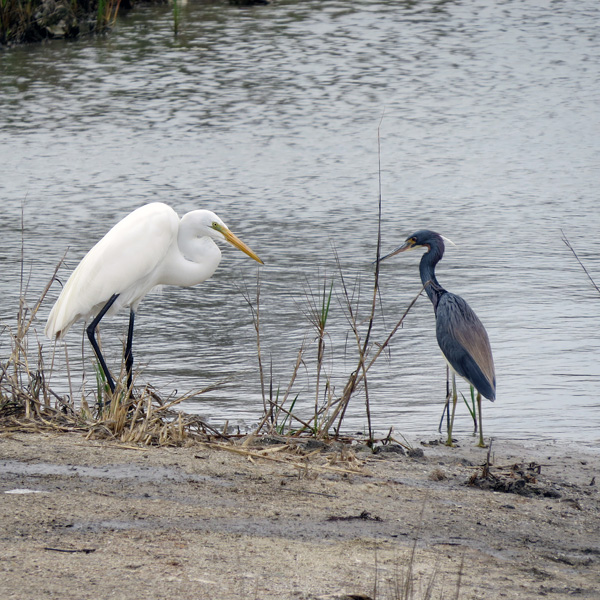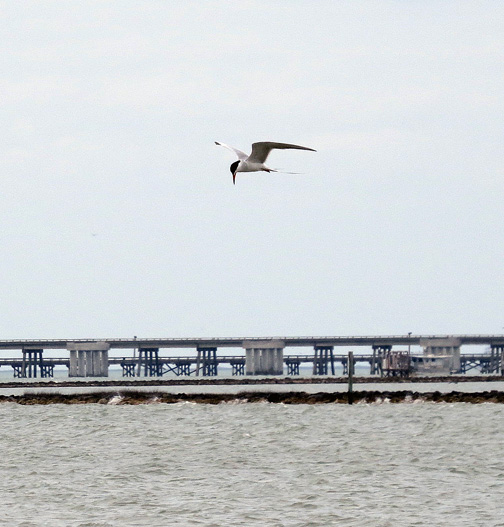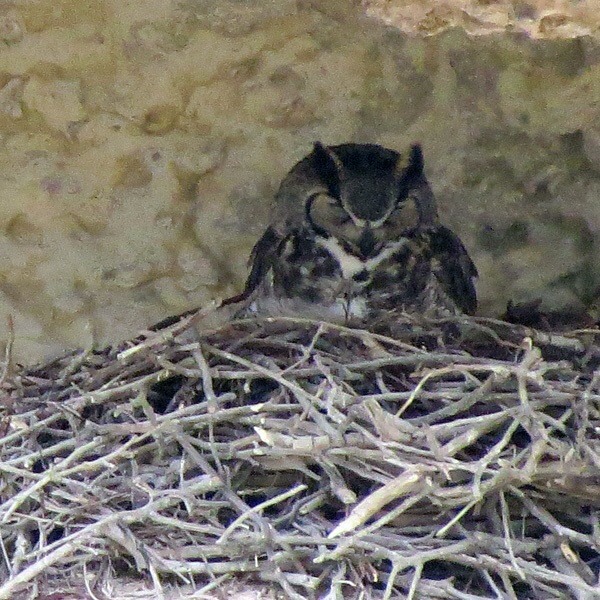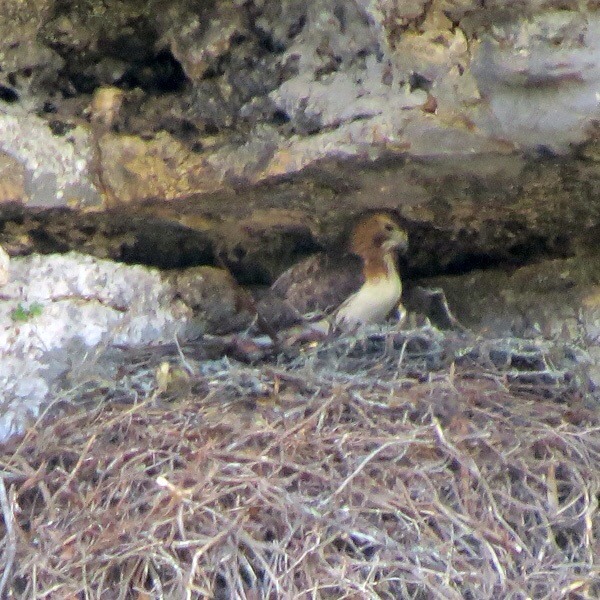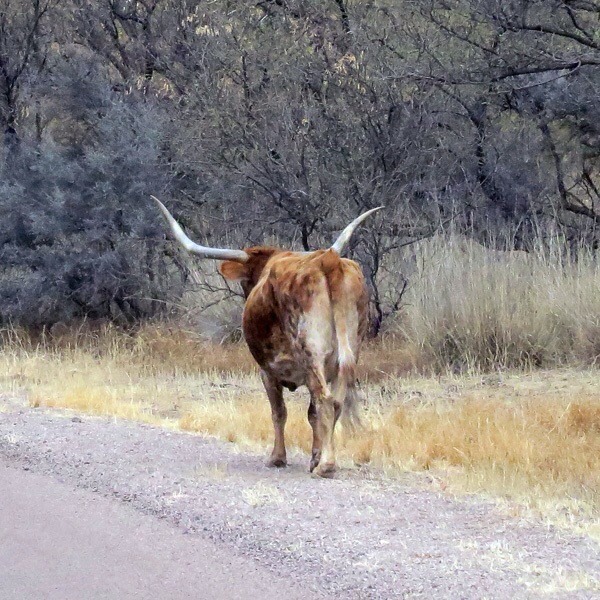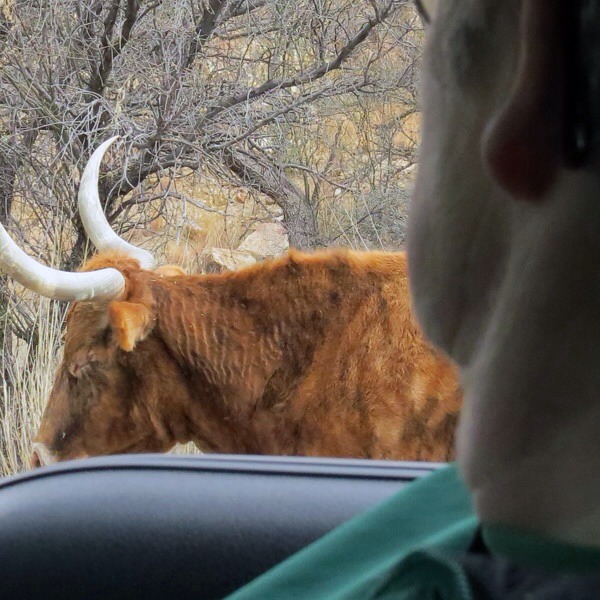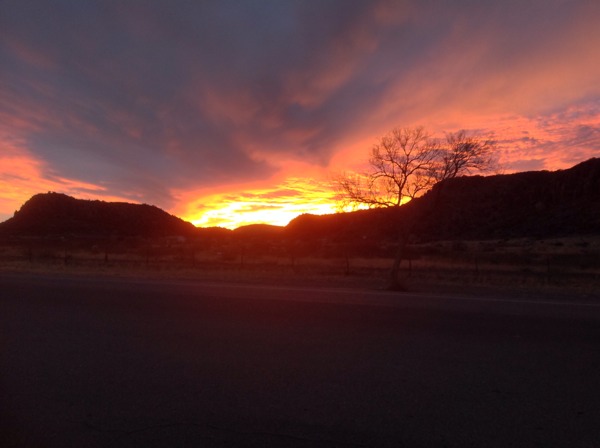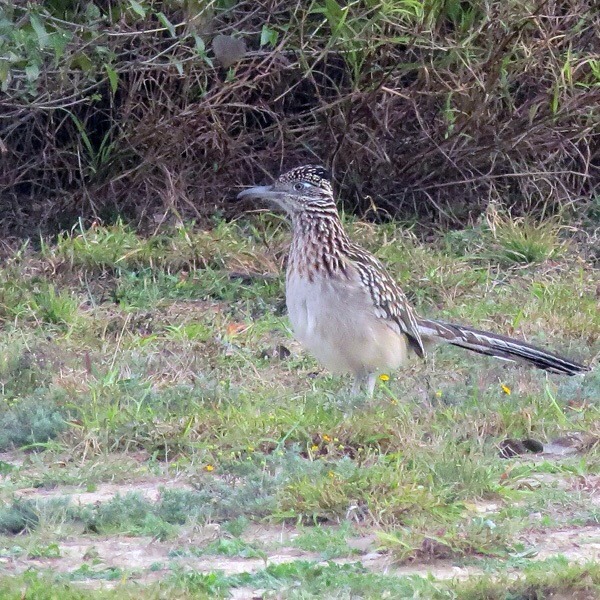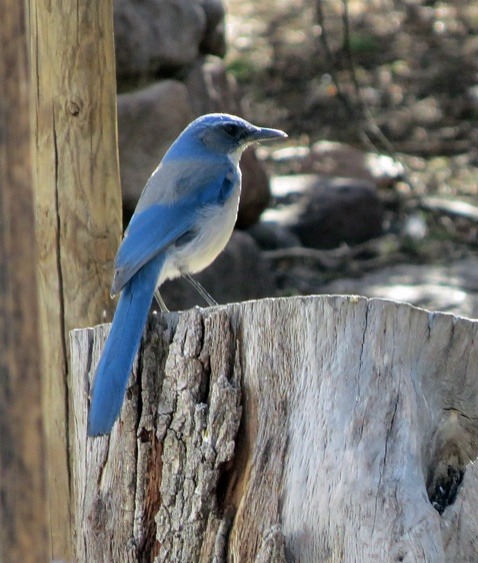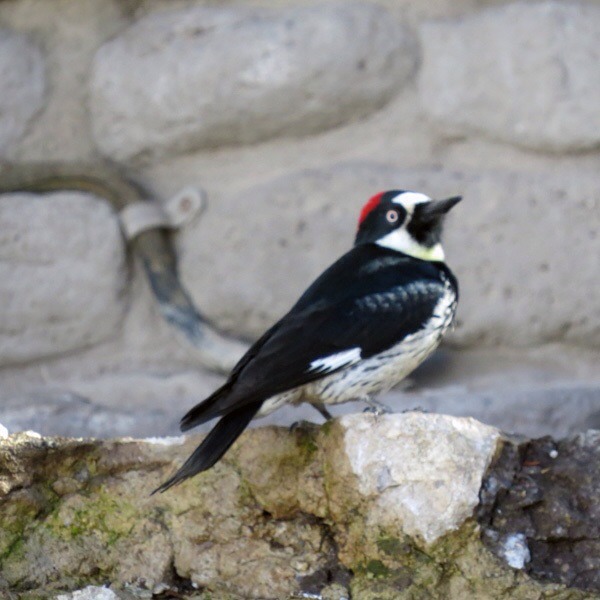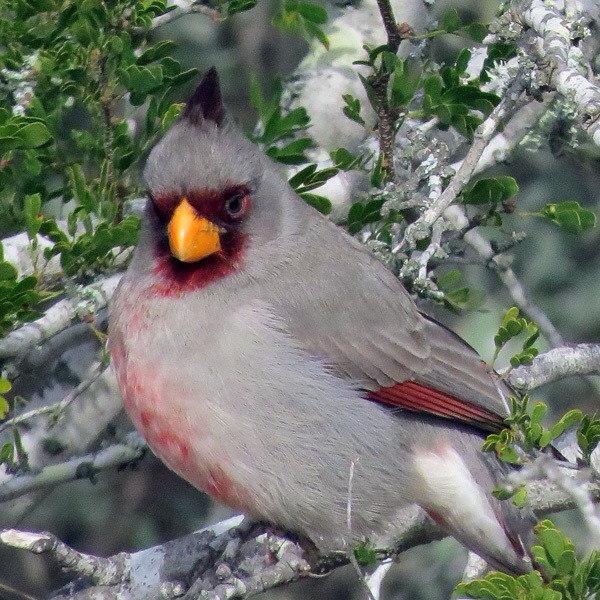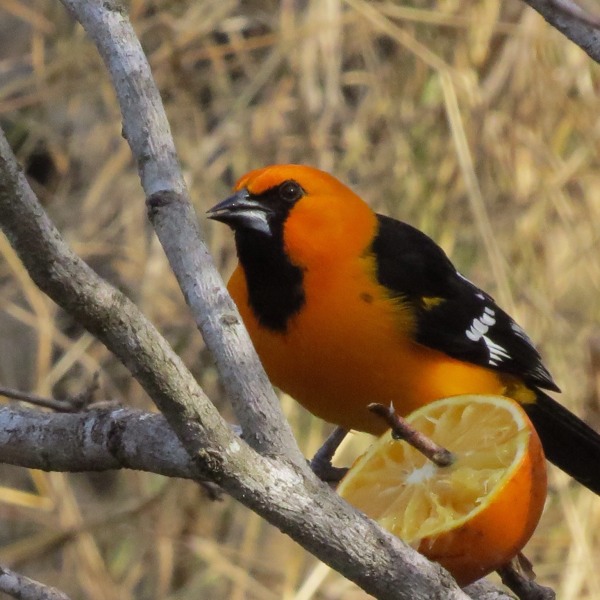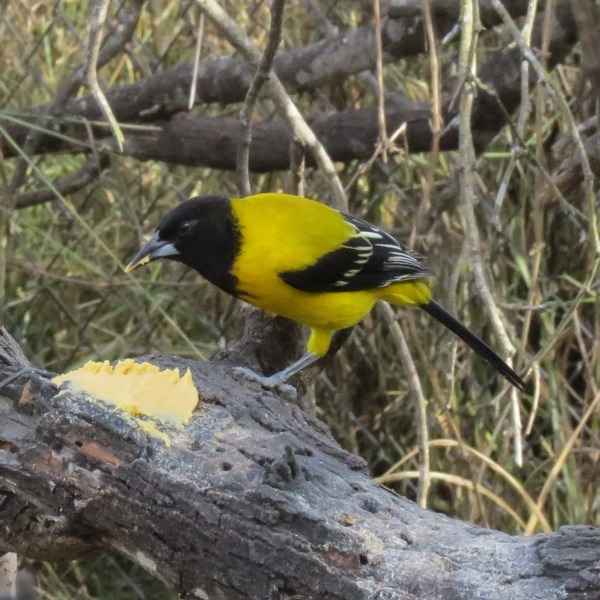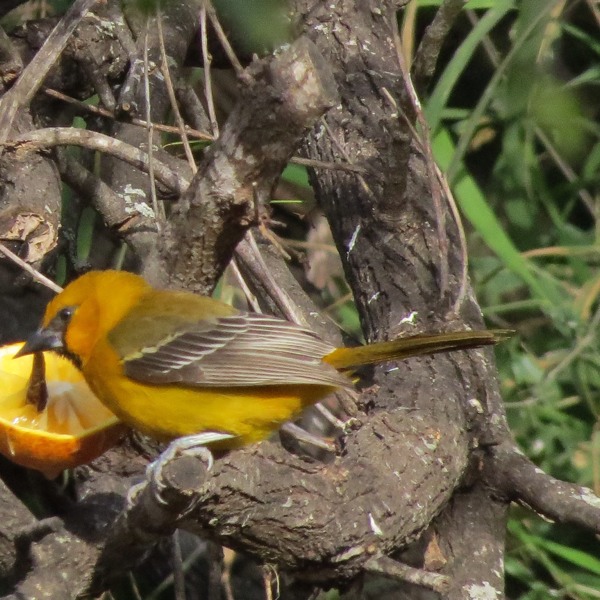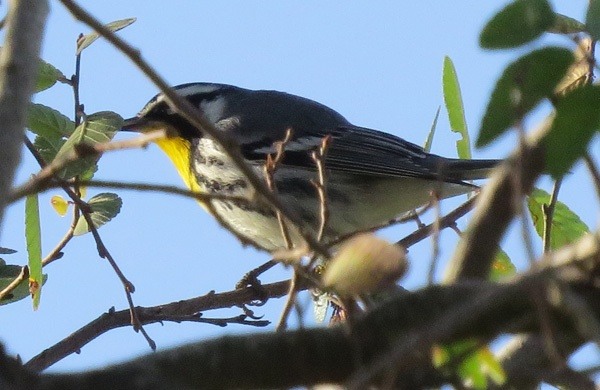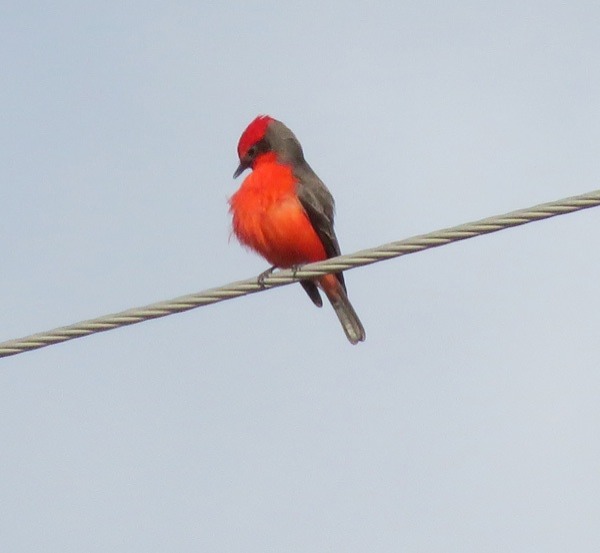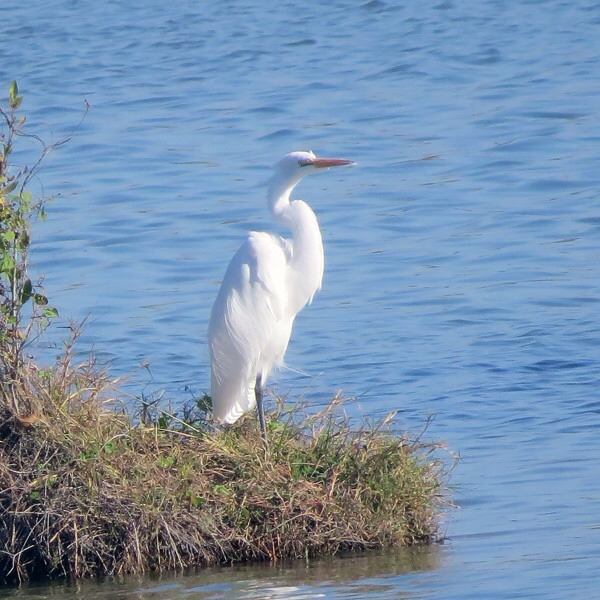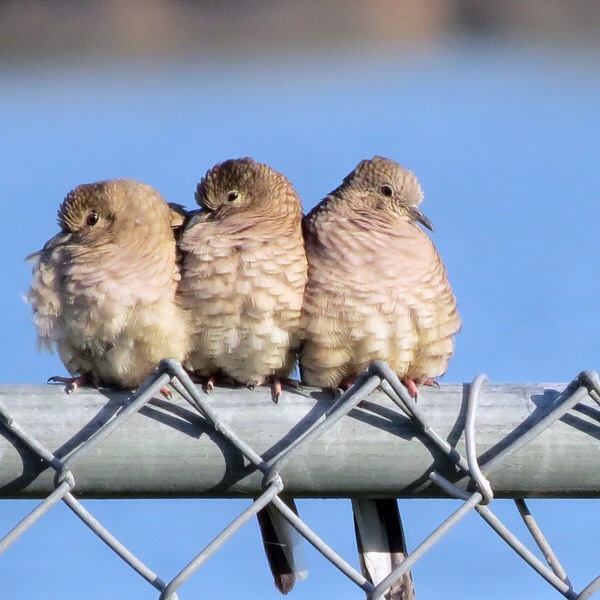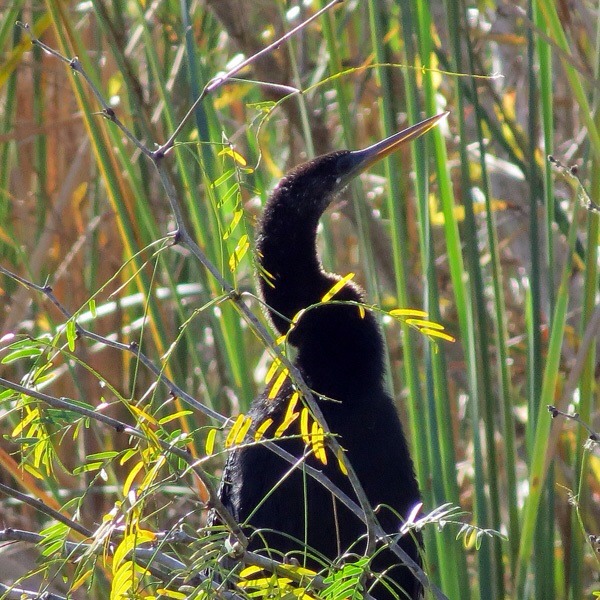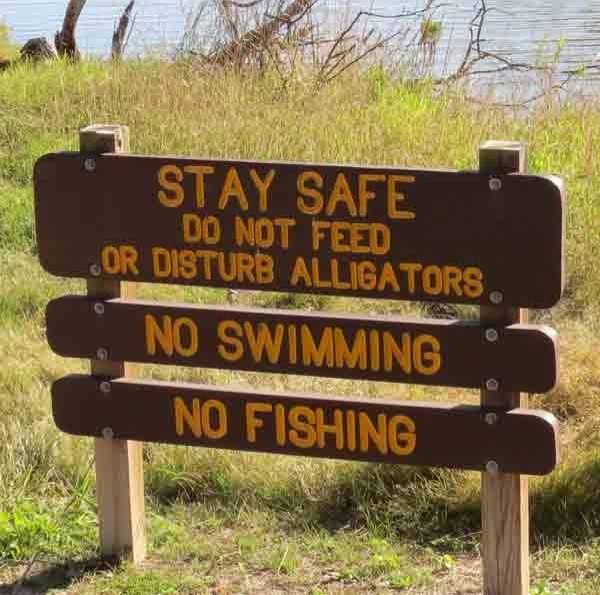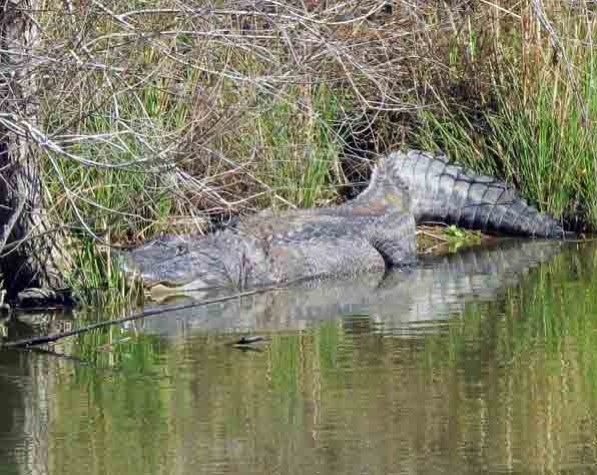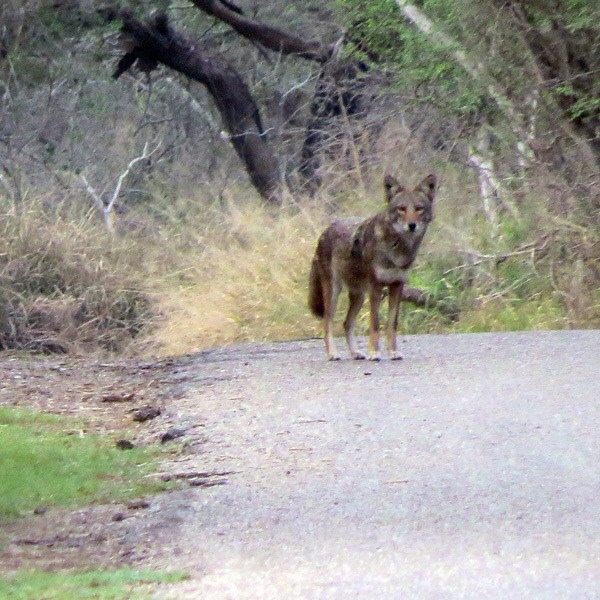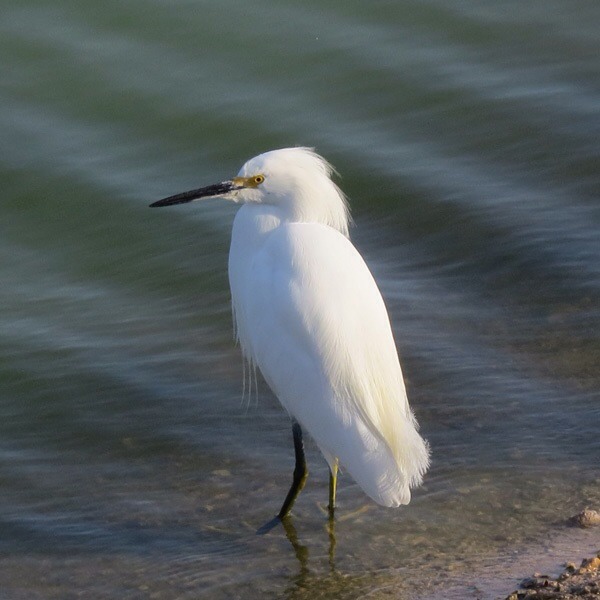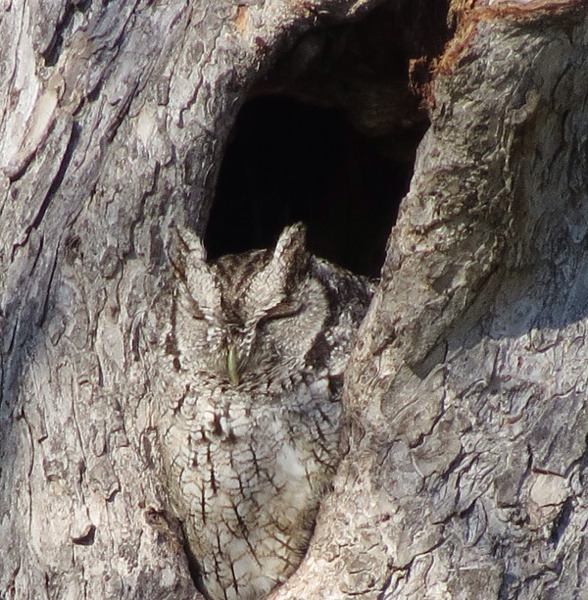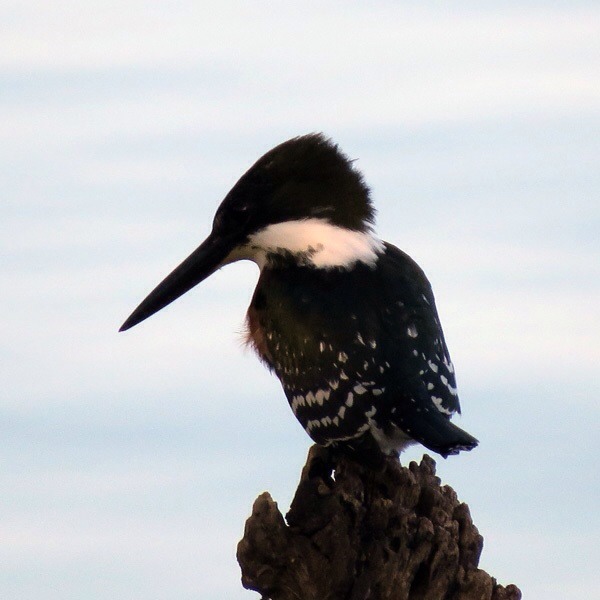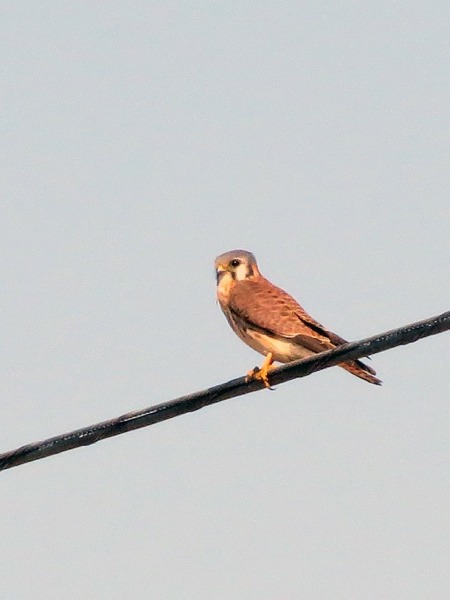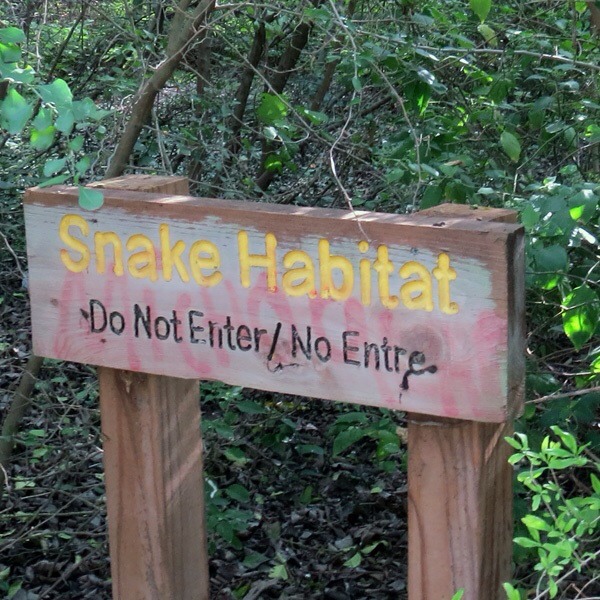We have been having some unsettled weather here at Goose Island State Park which has resulted in mini-fallouts of warblers. After each set of showers, a few new birds show up. Mostly, it’s been Black & White Warblers and the ubiquitous Yellow-rumps but we’ve seen Black-throated Greens, Yellow-throated Warblers, Northern Parulas, and Orange-crowned Warblers.
We had a pretty stiff thunderstorm this afternoon. Afterward, Penny and I took a long walk, seeing little besides the normal suspects, but at the far end of the wooded part of the park, I noticed some movement on the ground and approaching, saw a Northern Mockingbird and a couple of yellow spots.
It was a couple of male Hooded Warblers, feeding on the ground, tired from their journey, and essentially ignoring us. I got closer and grabbed a couple of shots although they were still quite far away. I saw five other warbler species on the ground as well. (This was not like a major fallout with hundreds of exhausted birds — it was more of a rest stop by a few migrants.)
This was not a life bird for me: I saw one two years ago here. I was exciting because what’s not to like about a colorful bird, right out in the open, giving you plenty of time to watch and wonder. And no warbler neck problems.
The forecast for the week looks pretty lousy, weather-wise, but for birders, it may provide some more opportunities. It’s still running 40 degrees or more warmer than home so we aren’t complaining. And I may get to see some of these guys and gals, or their cousins again, later this spring.

